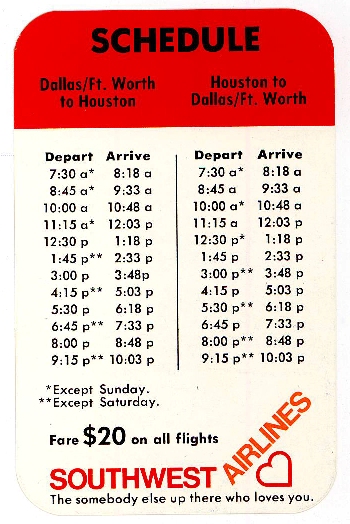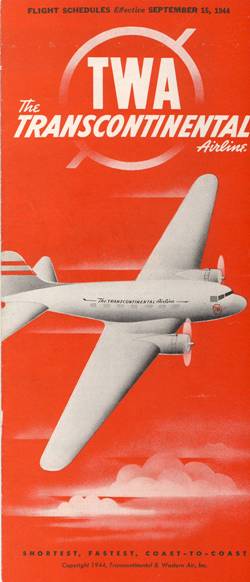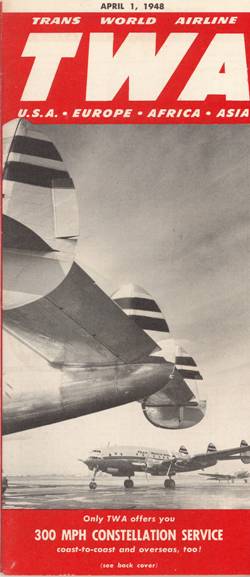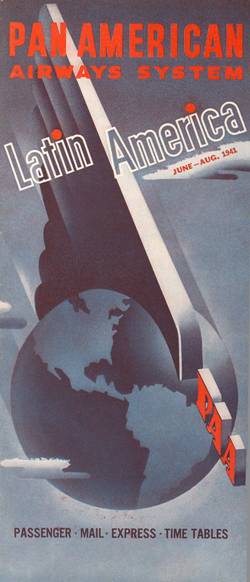- Subscribe to RSS Feed
- Mark as New
- Mark as Read
- Bookmark
- Subscribe
- Printer Friendly Page
- Report Inappropriate Content
Don’t worry, our schedules can still be accessed easily at southwest.com by clicking on “Travel Tools,” then “Flight Schedules,” or Customers can call our Customer Support and Services number at 1 800 I FLY SWA for flight information. So let’s take a moment to reflect upon the alpha and omega of Southwest timetables. The little one at the top is the front and back of our first timetable from June 1971. (I collected this on my first Southwest flight in July 1971.) At the same time, we also put out a more traditional paper schedule with flight numbers, but it is extremely rare.


Contrast the first timetable with our last one. For approximately the last ten years, our timetables have featured Employees from just about every area of the Company (that's Brian Bond below), and I have known a good number of these folks.
As I mentioned, this is really an industry-wide story, and the history of airline timetables is really the history of the airline industry. Those of you who are regular readers know that I am a huge aviation buff, nerd, geek, etc. Besides reading books and watching airplanes at the
Even during the height of the war, airlines continued to serve domestic passengers and to print their timetables. The stylized DC-3 of Transcontinental and Western Air (TWA) September 15, 1944 timetable proclaimed the shortest and fastest coast-to-coast service (which still took almost a full day).
Until the advent of the jumbo, each airline strived to have the fastest and newest aircraft.


My collection spans the world and goes behind the old iron curtain. For me it represents a repository of my dreams. For the ones that were current when I obtained them, they represent the possibility of traveling to places I had never been, to fly on exotic airliners, or to return to a familiar and favorite location. The older ones I purchased represent those great airlines and airliners of the past that will never be again.
My boxes contain an honor roll of the industry. Successful carriers like Southwest, Lufthansa, and
You must be a registered user to add a comment. If you've already registered, sign in. Otherwise, register and sign in.


